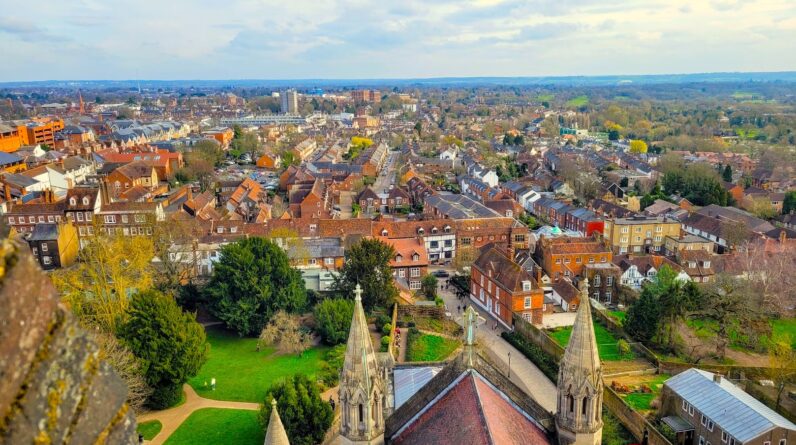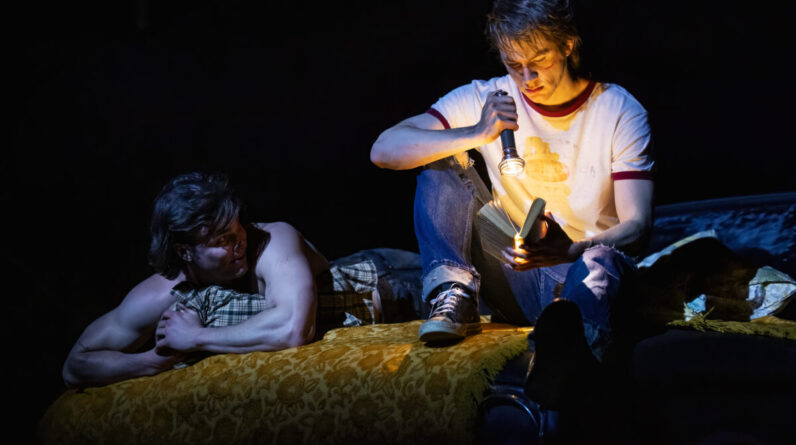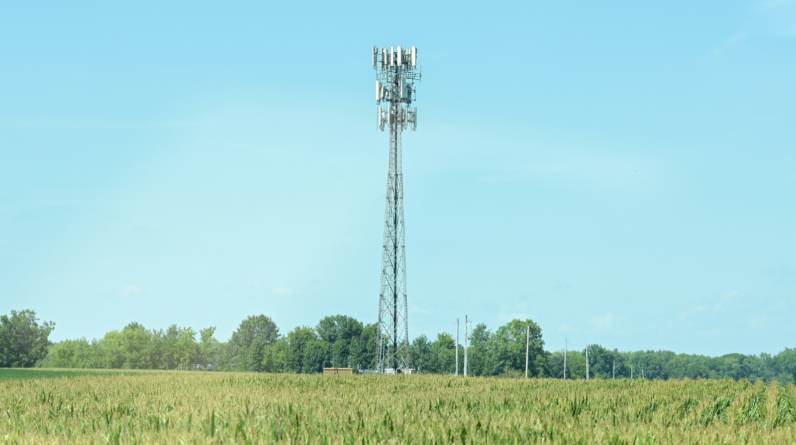
[ad_1]
Looking down at the City of St Alban’s from atop of the Cathedral’s Norman Tower. Image by Tim Sandle.
What is it like to climb up and down an 11th-century tower? Moving through cramped passageways and twisting stairs at times so tight both shoulders need to rub against the stonework, Digital Journal’s UK reporter paid a visit to the city of St. Alban’s.
 Norman meets Gothic within St Alban’s cathedral. Image by Tim Sandle
Norman meets Gothic within St Alban’s cathedral. Image by Tim Sandle
Situated in leafy Hertfordshire, England, St. Albans is a historic city, famous for being the site where the first Christian martyr was declared – a Roman soldier named Alban who was put to death for his religious beliefs. Alban became the first British saint.
 The ascent begins, navigating the first stage of the tower. Image by Tim Sandle.
The ascent begins, navigating the first stage of the tower. Image by Tim Sandle.
The city is located some 20 miles northwards from London.
 Long way down, looking at the detailed architecture from above.
Long way down, looking at the detailed architecture from above.
 Another view of the intricate beauty of the cathedral. Image by Tim Sandle
Another view of the intricate beauty of the cathedral. Image by Tim Sandle
As a site of early Christianity, several settlements were built around the area in succession; however, it was following the Norman invasion that the city’s status rose significantly. Under the requirements of King William, a cathedral was constructed.
Today, much of the cathedral’s architecture dates from Norman times, dating to the 11th century.
The Cathedral and Abbey Church of St Alban is the oldest site of continuous Christian worship in Britain.
 The Norman style is known as ‘Romanesque architecture’. Image by Tim Sandle
The Norman style is known as ‘Romanesque architecture’. Image by Tim Sandle
Some additions have taken place to the cathedral, first during the Gothic period and then followed by some more modern adaptations.
One of the most impressive features is the cathedral’s tower. It is the only 11th-century great crossing tower still standing in England.
The original Norman arches survive principally under the central tower and on the north side of the nave.
 View from the half-way point, taking in some of the immense scale of the Cathedral. Image by Tim Sandle.
View from the half-way point, taking in some of the immense scale of the Cathedral. Image by Tim Sandle.
The tower has thick supporting walls and four massive brick piers. The four-level tower tapers at each stage with clasping buttresses on the three lower levels and circular buttresses on the fourth stage.
 The stairs within the tower are very narrow at times. Image by Tim Sandle.
The stairs within the tower are very narrow at times. Image by Tim Sandle.
The entire structure masses 5,000 tons and is 144 feet high. There are over 200 steps.
 There are many interesting objects along the way, including an immense Victorian musical organ. Image by Tim Sandle.
There are many interesting objects along the way, including an immense Victorian musical organ. Image by Tim Sandle.
During the Victorian era, a need for serious repair work was identified and the task was given to the architect Lewis Nockalls Cottingham. Cottingham recommended new beams throughout the roof and a new steeper pitch.
 The Victorian beams added to provide structure and safety to the tower. Image by Tim Sandle
The Victorian beams added to provide structure and safety to the tower. Image by Tim Sandle
The tower contains a bell-ringing chamber.
 Inside the bell rining chamber. Image by Tim Sandle.
Inside the bell rining chamber. Image by Tim Sandle.
In total, there are 23 bells housed in the tower. The main ring of 12 bells (with a sharp 2nd) was cast in 2010 by the Whitechapel Bell Foundry.
 Some of the heavy bells that are located in the Norman tower. Image by Tim Sandle.
Some of the heavy bells that are located in the Norman tower. Image by Tim Sandle.
The oldest bell in the tower was cast in c.1290 and is still used today as the sanctus bell.
Two battles of the Wars of the Roses (a series of civil wars fought over control of the English throne) took place in or near the city. The First Battle of St Albans was fought on 22 May 1455 within the town, and the Second Battle of St Albans was fought on 17 February 1461, just to the north.
 The magnificent ceiling part way up the tower showing the different protagonists during the Wars of the Roses. The ceiling was commissioned by King Henry VIII. Image by Tim Sandle.
The magnificent ceiling part way up the tower showing the different protagonists during the Wars of the Roses. The ceiling was commissioned by King Henry VIII. Image by Tim Sandle.
The tower was once topped with a Norman pyramidal roof; the current roof is flat.
 View Magnifique – St Alban’s city from the top of the Norman tower. Image by Tim Sandle.
View Magnifique – St Alban’s city from the top of the Norman tower. Image by Tim Sandle.
 What goes up must come down. End of the tour and time to descend the tower. image by Tim Sandle.
What goes up must come down. End of the tour and time to descend the tower. image by Tim Sandle.
[ad_2]
Source link






